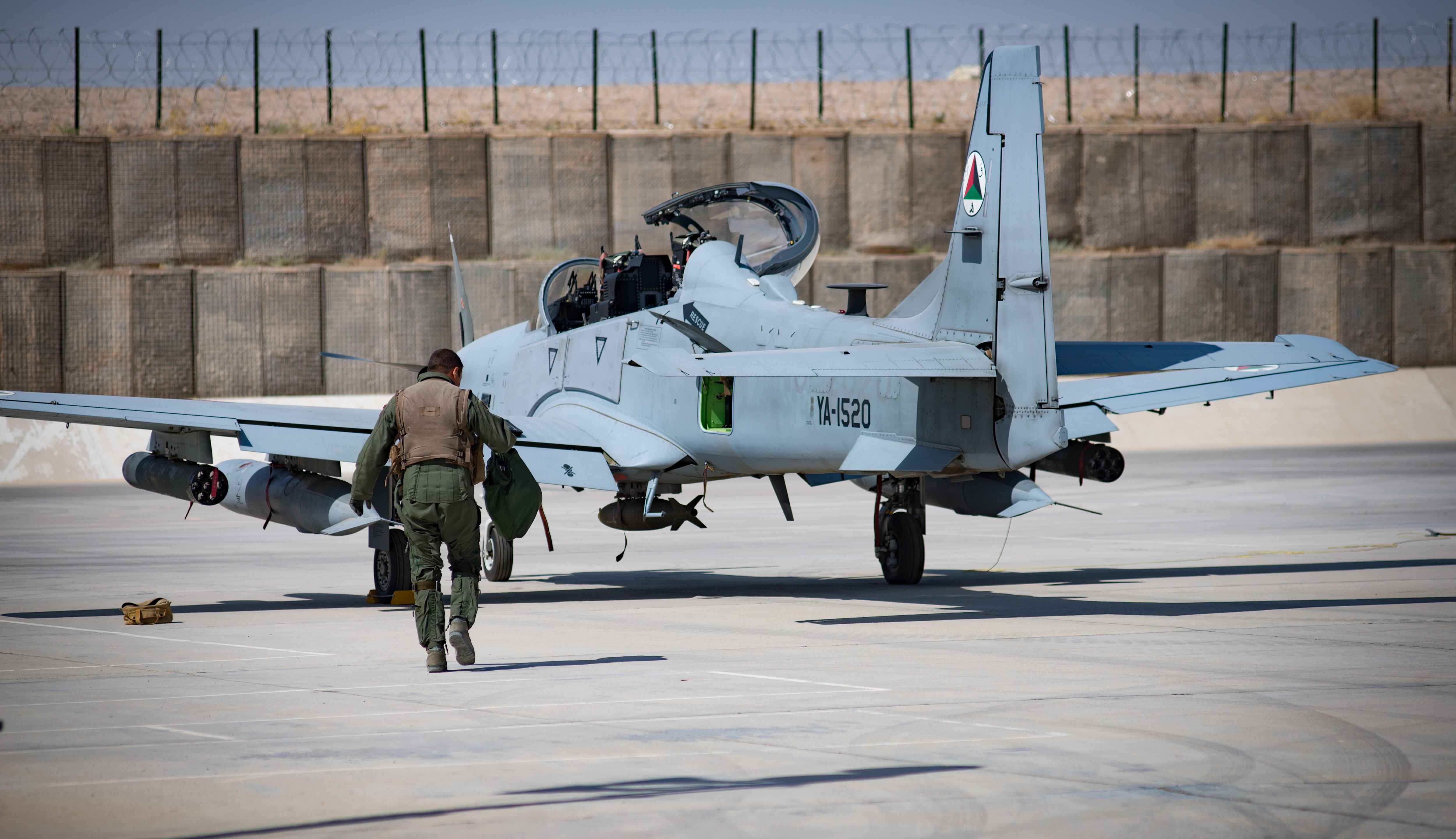The Nigerian air force has about a squadron worth of light attack aircraft — their pilots and maintainers trained by U.S. Air Force personnel — to fight terrorists in the African nation.
U.S. Africa Command noted the induction ceremony for the A-29 Super Tucano, a turboprop light attack aircraft, in an Aug. 31 release.
So far, 64 pilots and maintenance crews in the Nigerian air force have trained at Moody Air Force Base, Georgia, with the U.S. Air Force’s 81st Fighter Squadron, according to the release.
RELATED

The Super Tucano can conduct intelligence, surveillance and reconnaissance missions and precision air-to-ground strikes, according to the Africa Command release.
Nigeria had long sought the aircraft for use in its fight against Boko Haram militants and the ISIS West Africa branch, which threatens Nigerian security. The U.S. approved the sale of A-29s to Nigeria, a package that included training, munitions, related equipment and logistics and maintenance support. It also included multi-year construction to improve Kainji air base. The $500 million deal is the largest Foreign Military Sales program in sub-Saharan Africa, according to the AFRICOM news release.
“The A-29 is a prime tool to help Nigeria combat violent extremism and is vital to sustained deterrence,” said Gen. Jeff Harrigian U.S. Air Forces in Europe-Air Forces Africa commander. “The total package deal — aircrew and maintainer training, precision-guided weapon delivery, and more — highlights our enduring partnership with the Nigerian Air Force and our commitment to enabling their successes where we can.”
The construction will include $29 million in funding for earth-covered magazines, aircraft sunshades, a new airfield hot cargo pad, perimeter and security fencing, airfield lights and airfield apron, parking, hanger and entry control point enhancements.
Also included is a flight annex wing building for simulator training and munitions assembly area and small-arms storage.
After flirting with the idea of buying Super Tucanos as a light attack aircraft for uncontested airspaces in places like Africa, the U.S. Air Force backed off. But it did purchase three of the aircraft from Sierra Nevada Corp./ Embraer Defense & Security for the combat aviation advisor mission at Air Force Special Operations Command. AFSOC will use the aircraft to support CAA training of U.S. allied pilots.
In 2018, then-Air Force Chief of Staff Gen. Dave Goldfein argued that a light attack aircraft like the Super Tucano was key not primarily for U.S. pilots supporting U.S. ground troops but more so for sharing intelligence between platforms with partner nations.
“How do I improve my ability to share with folks who now join us so they can strengthen not only our military capability but our moral authority?” Goldfein told Air Force Times in 2018.
Goldfein said then the focus for him was pushing the aircraft out to partner forces to maintain the momentum against violent extremism.
“That’s everywhere from the Philippines to Nigeria,” he said.
The same planes were in use by the Afghan air force, but were seized by the Taliban, along with other U.S.-made military aircraft, as the group took over the country in recent weeks and months, Air Force Times sister publication Defense News previously reported. Some Afghan A-29 pilots appear to have flown their planes to Uzbekistan, The Drive reported.
As recently as this summer, the Afghan air force operated 23 A-29 attack planes, four C-130 cargo planes and a total of 33 militarized versions of the Cessna Caravan, some of which were configured for a light attack mission, according to a July report by the report by the Special Inspector General for Afghanistan Reconstruction.
Todd South has written about crime, courts, government and the military for multiple publications since 2004 and was named a 2014 Pulitzer finalist for a co-written project on witness intimidation. Todd is a Marine veteran of the Iraq War.








